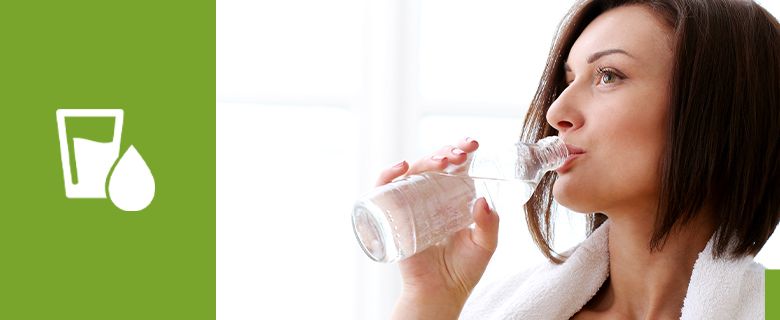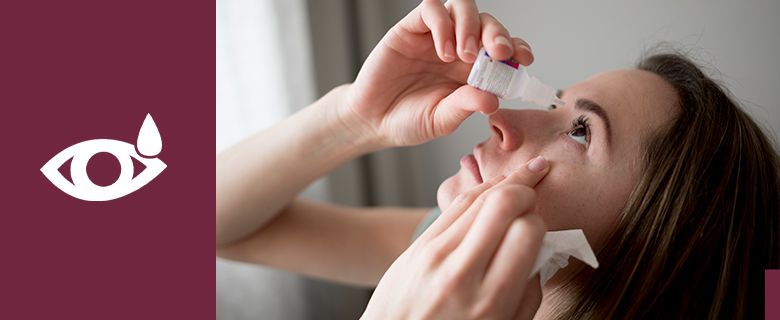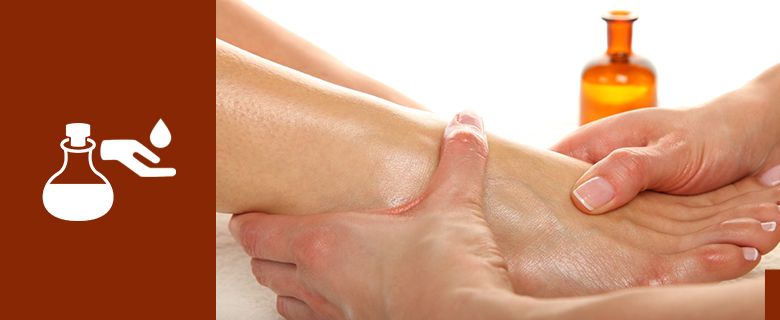
Dinacharya: A Traditional Ayurvedic Daily Routine
Ayurveda, the ancient science of life, considers aarogya (health) as the most vital aspect in the accomplishment of the Purusharth Chatushya, i.e., the 4 aims and objectives of life.
If we tried comparing the lifestyle of the present era and the past, what would you see?
In today’s world of urbanisation and technology, we have centred our lives on material wealth. And while we’re in this pursuit of prosperity, we seem to have compromised on our physical fitness, dietary schedule and sleep pattern, paving the way for lifestyle diseases.
Being a holistic health science, Ayurveda emphasizes on the importance of a healthy lifestyle for the prevention of disease. In the earlier days, life wasn’t quite so hectic. The benefits of simple living and a clean environment are evident in the older generations. People were healthy as they had to perform all daily routine activities on their own.
Although life has become more comfortable in this present era of wealth, hectic routines and cut-throat competition have taken a toll on us, physically, mentally and emotionally. This is where Ayurveda helps us return to our roots and prioritise our health and well-being. A detailed description of a prevention-oriented dinacharya (daily regimen) for maintaining good health and a disease-free life is mentioned in Ayurveda.
Let’s take a look at the various aspects of dinacharya and its applications in the present scenario:
1. Bramhamuhurta Jagrana (Time Of Waking Up)

- In Ayurveda, it is advisable to wake up during brahmamuhurta, i.e., 90 minutes before sunrise.
- Brahma means knowledge and the early morning hours are suffused with cosmic clarity, stillness and serenity.
- Satva guna is dominant in the human body and it is a golden time for reading, self-reflection and self-care.
- Basking in the first rays of the sun releases serotonin (neurotransmitter) which contributes to a feeling of well-being, happiness and alertness.
- Nascent oxygen in the atmosphere easily mixes with haemoglobin to form oxy-haemoglobin which nourishes remote tissues rapidly.
- It’s the ideal time to practise yoga, pranayama and meditation, as the air is fresh, and pollution and noise levels are low.
2. Ushapan (Water Intake Early In The Morning)

- After waking up, drink a glass of lukewarm water that is preferably kept overnight in a copper vessel.
- Warm water, taken first thing in the morning, cleanses and hydrates the body, stimulates the digestive tract and helps promote bowel movements.
- Ushapan can help prevent diseases like arsha (haemorrhoids), sotha (oedema), grahani (sprue), jwara (fever), skin disorders, and old age and obesity-related diseases.
- It is said that a person who drinks warm water daily at sunrise, can live without the fear of disease or old age.
3. Shauchkarma (Elimination Of Bodily Waste)

- After ushapan, emptying the bladder and bowels is the next natural step in your daily hygiene routine.
- Suppressing or forcefully avoiding the urge to eliminate bodily waste isn’t considered a good idea.
- Vegvidharna (suppression) can harm your health and lead to disease.
4. Dantdhavan (Cleaning Of Teeth)

- You should clean your teeth in the morning as well as after meals.
- Cleaning the teeth stimulates taste perception and increases salivation.
- According to Ayurveda, teeth should be cleaned by chewing the twigs of medicinal plants like neem or khadir which makes gums stronger and also provides exercise to the facial muscles.
5. Jivha Nirlekhan (Tongue Cleaning)

- Cleaning the tongue daily promotes overall physical and mental health.
- Removing the coating of toxins accumulated overnight on the tongue also stimulates and detoxifies our organ systems.
- This oral health practice helps balance the heavy and dulling qualities of kapha dosha.
6. Anjana (Application Of Collyrium In Eyes)

- In today’s age, excessive work on the computer often results in dry eye or computer vision syndrome.
- Daily application of anjana eliminates kapha dosha from the eyes and improves eye health.
- Splashing cold water on your eyes removes dirt, alleviates burning sensations, and soothes itching and pain.
7. Nasya (Application Of Nasal Oil Drops)

- Put two drops of sesame oil/mustard oil/ghee or anu taila (Ayurvedic preparation) in each nostril.
- Nasya strengthens the sense organs, prevents premature greying of hair and baldness, and ensures sound sleep.
8. Gandusha (Mouth Wash)

- Filling the mouth with gandusha dravya and retaining it for some time is known as gandush.
- This rejuvenation and preventive therapy heightens the senses, invigorates the mind and brings about a feeling of freshness.
- The gandusha technique is useful in preventing bad breath, dry skin, dull senses, anorexia, loss of taste and impaired vision.
9. Abhyanga (Oil Massage)

- Abhyanga is an ancient Ayurvedic approach adopted for healing, relaxing and treating various types of vataj disease.
- The Sanskrit word for oil is sneha, which also means love. Therefore, Abhyanga is a practice of self-love, to be performed daily.
- When massaging the entire body, first start with the extremities such as your head, neck, shoulders and arms, or your toes, ankles, calves and feet. After finishing, move to the centre of your body for your chest, back and stomach. Use long up-down strokes on the limbs, continuous pulling strokes for the fingers and toes, and circular strokes on the joints.
- Abhyanga delays aging, reduces stress, helps in attaining sound sleep and works on the manas bhav.
10. Vyayam (Exercise/Yoga)

- The aim of vyayam is to support harmonious development of the whole body.
- Simple exercises and yoga can be practiced daily at home.
- Regular vyayam promotes physical development, stimulates digestion, increases stamina and tolerance to cold and heat, strengthens immunity, and improves vitality.
- Ardhashakti (at half strength) vyayam is indicated in sheeta and vasant kala, as vyayam practiced beyond the capacity of the body in these seasons can be harmful.
- If you have a kapha prakruti, you usually have a strong constitution and immunity. An energetic regimen like aerobics, Zumba, or dance will help get the body moving and the blood pumping faster.
- For pitta types, exercises should be medium in intensity and should not overheat the body and mind. Don’t exercise at mid-day when the sun and pitta are at their strongest point.
- Vata individuals, characterised by air and space, tend to be smaller, more fragile and have a lower weight. So vata types must remember to keep the pace slow and the intensity low with gentle and non-weight bearing exercises.
If you’re wondering whether you’re a vata, pitta or kapha type, you can take the prakruti quiz to find out.
11. Snana (Bath)

- A daily bath improves health, strength, energy, agni (digestive power), longevity and sexual desire.
- It removes kandu (itching), mala, shram (fatigue), sweda (sweat), lethargy, trishna (thirst), daha (burning sensation), and feverish feelings.
- Always use cold or lukewarm water, as very hot water is considered harmful for the eyes and hair.
- Bathing in very cold water in the winter season vitiates kapha and vata, while bathing in very hot water in the summer season vitiates pitta and rakta.
- Don’t have a bath right after eating food, as this can lead to indigestion, nausea, and abdominal discomfort.
These daily regimen procedures have beneficial effects on the proper functioning of the body. Following a personalised dinacharya helps maintain a state of equilibrium of the three dosha (vata, pitta, kapha), seven dhatu (body tissues), three mala (waste products) and your power of digestion.
If you’re looking for personalised guidance to lead a healthier, happier life, you should sign up for an Ayurvedic consultation with Mi.Bo.So. We can provide 24/7 wellness care on call or over video in the comfort of your home. Our team, consisting of Ayurvedic vaidyas, nutritionists and yoga coaches, is here to help you and can advise a daily lifestyle routine tailored to your prakruti and the changing seasonal patterns. Incorporating the wisdom of this ancient science will promise to be a grounding and transformative experience for you.
If you have any questions at all, do leave a comment below and our team will get back to you.





4 Comments
Shweta Gadad
Are these the best wellness management strategies one should adopt?
ReplyYes, Ayurveda offers simple yet effective ways that can be included in your wellness management routine. These habits are usually easy to implement and do not cause any side-effects.
You can consult with a Vaidya to get a personalised health plan for a healthier mind, body and soul.
Sunny test
How is oil massage included in a Dinacharya?
ReplyYour Dinacharya includes many beneficial activities beneficial for your body. Abhyanga (oil massage) improves flexibility, dissolves the fat and rectifies the increased Vata and is a requirement of the body.
It is expected that you might get tired during the day; it is also the best way to reduce stress. Abhyanga should be included in your healthcare management routine as it also delays ageing and helps in achieving sound sleep patterns.
Thank you. Your comment will be visible after an approval.
Add your comment